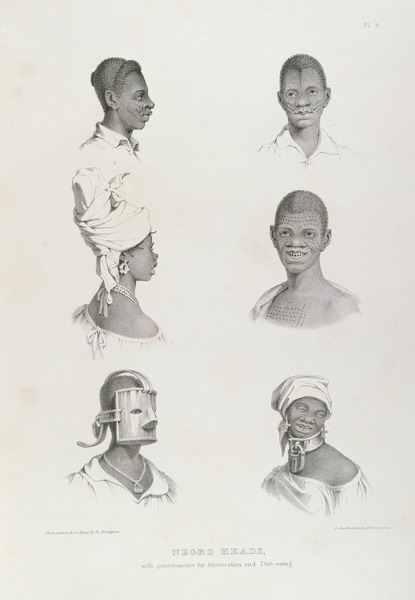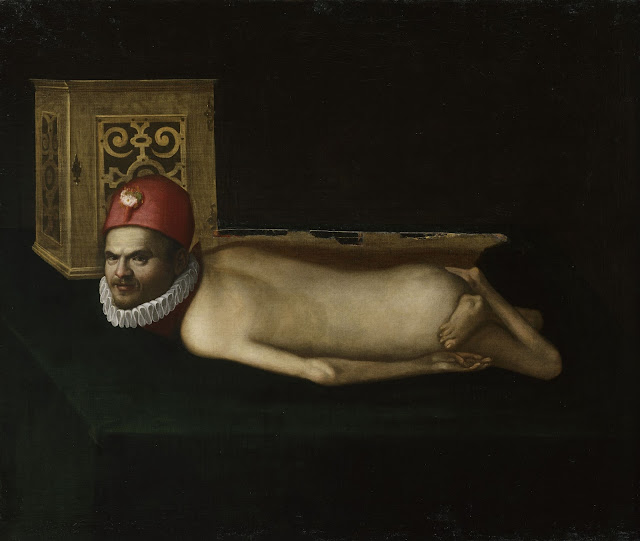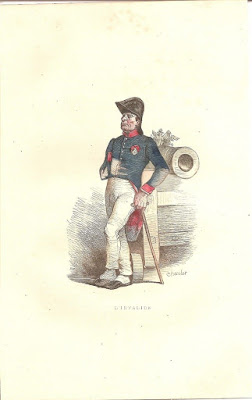A life less worth living: "Agent Orange" and the representation of disability in the War Remnants Museum
By Gaby Admon-Rick and Ahiya Kamara
Neuygen Thi Men lives in the Vu Thu district, Thai Binh province. When the original photo was taken by the photographer Doan Duch Minh, she was 21 years old. "Tragically," as the text beneath the photo reads, "she must remain in a cage-like enclosure all her life. All day long, Men attempts to chew and swallow anything within her grasp. Suddenly, as she recognizes her father, she extends her hand through her enclosure, reaching for him. Her father, Nguyen van Hang spent fighting in the Trung Son Mountains he was contaminated by Agent Orange."
Neuygen Thi Men and many more people with disabilities are presented at a special exhibition on Agent Orange at the War Remnants Museum in Ho Chi Minh City. The Museum is a "must" for visitors to Vietnam, interested in learning about the Vietnam War from a Vietnamese perspective. Like many other war museums all over the world, the museum includes details of the war, its atrocities and casualties, and describes the military actions and weapons of destruction used. Towards the end of the visit, the visitors are led to a special exhibit on "Agent Orange".
Agent Orange was the military name of herbicides used by the US Military during the Vietnam War in order to destroy crops, bushes and trees in order to gain a tactical advantage over the Viet Cong while fighting in these areas. The exhibition emphasizes the relationship between the exposure to Agent Orange and birth impairments. It is claimed, that this substance has led to the birth of 150,000 impaired children since the Vietnam War until today. While the issue raises many questions, we would like to focus on the way disability is portrayed in this exhibition influencing the way millions of visitors every year understand disability.
The exhibit starts with an explanation about the substance and its uses, and then continues with hundreds of photos of disabled people, in what seems to be a "freak show" of photos depicting extreme deformity, misery and tragedy. As the visitors walk through the exhibition they read stories of other people with disabilities, like the story of Le Van Hung, from the Commune Dong Thinh in District Dong Son, Thanh Hoe Province. He was 23 years old when this photo was taken. His parents had fought in the war in 1971. The photo depicts him in a position that resembles an animal, and the text beneath the photo says: "He cannot stand with his legs parallel but he can crawl to get around by his hands, take straw and cook for helping his family day."
Visitors walk through this exhibition with tears in their eyes. They appear heartbroken, overwhelmed by pity and sadness. Maybe they even feel disgust and anger as they gaze at what is portrayed as the "deformed" human body. By this "othering" process, they might also appreciate their own abled body and their fortune, empathize with the victims and feel enraged by the usage of chemicals in warfare.
While the purpose of the exhibition is to convey the horrors and tragedy of the war, it uses the images of disability to do so. Through the portrayal of disability in the exhibition, the visitors learn that impaired people have no meaning to their life and they are destined to a life less worth living. They are told that people with disabilities are not able to perform daily activities and – as a result – are destined to be excluded, live in poverty, become dependent on others and never gain education or employment. It is not mentioned that services, assistive equipment or technology could be provided or that the governments have a crucial role in social services, combating stigma and making environments accessible. Indeed, for people with disabilities in many places in the world, this seems to be the reality of life. With limited resources invested by the state, people with disabilities are not able to achieve full participation in all areas of life, as required by the UN-Convention on the Rights of Persons with Disabilities.
Walking through this exhibition, we couldn't stop thinking what the people in those photos would say if they were asked about their lives. How would they represent themselves? How would they tell their life story if they had the opportunity to do so? What are their hopes and dreams? Would they be concerned about the lack of services and discrimination? What would they think about the public images of persons with disabilities and those portrayed in this exhibition?
 |
| Neuygen Thi Men |
Neuygen Thi Men and many more people with disabilities are presented at a special exhibition on Agent Orange at the War Remnants Museum in Ho Chi Minh City. The Museum is a "must" for visitors to Vietnam, interested in learning about the Vietnam War from a Vietnamese perspective. Like many other war museums all over the world, the museum includes details of the war, its atrocities and casualties, and describes the military actions and weapons of destruction used. Towards the end of the visit, the visitors are led to a special exhibit on "Agent Orange".
Agent Orange was the military name of herbicides used by the US Military during the Vietnam War in order to destroy crops, bushes and trees in order to gain a tactical advantage over the Viet Cong while fighting in these areas. The exhibition emphasizes the relationship between the exposure to Agent Orange and birth impairments. It is claimed, that this substance has led to the birth of 150,000 impaired children since the Vietnam War until today. While the issue raises many questions, we would like to focus on the way disability is portrayed in this exhibition influencing the way millions of visitors every year understand disability.
 |
| Le Van Hung |
Visitors walk through this exhibition with tears in their eyes. They appear heartbroken, overwhelmed by pity and sadness. Maybe they even feel disgust and anger as they gaze at what is portrayed as the "deformed" human body. By this "othering" process, they might also appreciate their own abled body and their fortune, empathize with the victims and feel enraged by the usage of chemicals in warfare.
While the purpose of the exhibition is to convey the horrors and tragedy of the war, it uses the images of disability to do so. Through the portrayal of disability in the exhibition, the visitors learn that impaired people have no meaning to their life and they are destined to a life less worth living. They are told that people with disabilities are not able to perform daily activities and – as a result – are destined to be excluded, live in poverty, become dependent on others and never gain education or employment. It is not mentioned that services, assistive equipment or technology could be provided or that the governments have a crucial role in social services, combating stigma and making environments accessible. Indeed, for people with disabilities in many places in the world, this seems to be the reality of life. With limited resources invested by the state, people with disabilities are not able to achieve full participation in all areas of life, as required by the UN-Convention on the Rights of Persons with Disabilities.
Walking through this exhibition, we couldn't stop thinking what the people in those photos would say if they were asked about their lives. How would they represent themselves? How would they tell their life story if they had the opportunity to do so? What are their hopes and dreams? Would they be concerned about the lack of services and discrimination? What would they think about the public images of persons with disabilities and those portrayed in this exhibition?
 |
| Lai Van Hung, 20, and Lai Van Manh, 19. |
"Lai Van Hung, 20, and Lai Van Manh, 19. Each suffers from the same physical disabilities: they are paralyzed, brain damaged, unable to speak coherently, and must spend their days lying on a wooden bed in a corner of their house."
Recommended Citation
Gaby Admon-Rick & Ahiya Kamara (2016): A life less worth living: "Agent Orange" and the representation of disability in the War Remnants Museum. In: Public Disability History 1 (2016) 14.
__________________
Notice: Photos of exhibit were taken by authors for illustration purposes.
Gaby Admon-Rick & Ahiya Kamara (2016): A life less worth living: "Agent Orange" and the representation of disability in the War Remnants Museum. In: Public Disability History 1 (2016) 14.
__________________
Notice: Photos of exhibit were taken by authors for illustration purposes.


